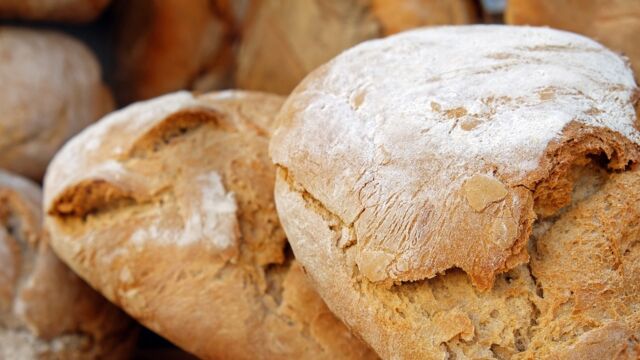Today, bread has become a classic and traditional staple in many cultures. Yet we are far from having learned all the secrets of the origins of bread. On an archaeological site in northern Jordan, researchers have discovered the charred remains of a slab of bread baked by hunter-gatherers from the Levant, who are known as Natufians. What stands out? The bread is no less than 14,400 years old and is thus the oldest ever found.
Discover our latest podcast
So far, the record was held by the remnants of 9,500-year-old bread found at the Çatalhöyük site in the Anatolia region of Turkey. The more recent discovery puts the idea that the origin of bread is associated with the emergence of agriculture in Southwest Asia about 4000 years later into question, according to the study published in PNAS (Proceedings of the National Academy of Sciences of the United States of America).
A flatbread from the past
When excavating the site in Jordan, archaeologists unearthed two structures, each containing a large circular stone hearth. They were surprised to discover the remains of bread in these dwellings. ‘The presence of hundreds of oxidised remains is an exceptional discovery that allowed us to identify 14,000-year-old eating habits,’ says Amaia Arranz Otaegui, an archaeobotanist at the University of Copenhagen.
The remains of the charred pieces of bread were analysed by electron microscopy in a laboratory at University College London by PhD student Lara Gonzalez Carretero, a specialist in prehistoric bread. ‘We have established a new set of criteria to identify flatbread,’ she says.
By scanning with electron microscopy, we have identified the microstructures and particles of each oxidised piece of food.
This revealed much more information that allowed the secrets of this ancient bread to be revealed. ‘The 24 remains analysed in this study show that the ancestors of wild cereal grains such as barley, wheat and oats were crushed, strained and kneaded before baking. The remains are very similar to unleavened flatbreads identified on several Neolithic and Roman sites in Europe and Turkey,’ says Amaia Arranz Otaegui.
According to specialists, the finished product certainly resembled flatbread and tasted similar to the multi-grain bread that we know today. Above all, its discovery shakes the theories about our ancestors and the development of agriculture.
‘A form of bread already existed 14,400 years ago’
In their study, experts suggest that the production of bread made from wild grain may have encouraged hunter-gatherers to grow cereal grains, thus contributing to the Neolithic agricultural revolution. ‘We already had suspicions about the processing of cereal grains, because we had found indirect indications such as milling or grinding equipment for flour dating from that time,’ says George Willcox, professor emeritus of archaeology at the French National Center for Scientific Research to the French newspaper Le Monde.
‘But the thorough and serious analysis in this study allows us to have the first direct evidence that a form of bread existed 14,400 years ago,’ he adds. The remains of flatbreads made from wild cereal grains found by scientists are thus credited with the thesis that ‘baking was invented before plant cultivation,’ according to Tobias Richter, associate professor of archaeology at the University of Copenhagen and coordinator of the study. More research is still needed to further support this hypothesis. For example, the Danish Council for Independent Research has already given the go-ahead for funding future research to establish whether or not Natufians regularly ate this bread.















